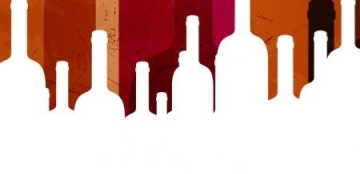- FAQ
- Bordeaux reds
Bordeaux reds
What is a Bordeaux red blend?
A Bordeaux red blend is a blend of grape varieties that are usually grown in the Bordeaux region of France.Usually, these blends contain Cabernet Sauvignon, Merlot, Cabernet Franc, Petit Verdot, and Malbec.
What are the 5 blending grapes of Bordeaux?
The blending grape of Bordeaux includes Cabernet Sauvignon, Merlot, Cabernet Franc, Petit Verdot, and Malbec.
Is Bordeaux a Merlot blend?
Merlot is a common component of Bordeaux wines, along with other varieties including Cabernet Sauvignon, Cabernet Franc, and Petit Verdot.
What does a Bordeaux blend taste like?
A typical blackcurrant, plum and blackberry flavors presented with a hint of cedar, tobacco, and earthiness and firm tannins in a Bordeaux blend.
Is Bordeaux red wine sweet or dry?
The Bordeaux red wine is usually dry.
What are the primary grape varieties used in Bordeaux red blends?
The leading grape varieties planted for Bordeaux red blends include Cabernet Sauvignon, Merlot, Cabernet Franc, Petit Verdot, and Malbec.
What sets Bordeaux red blends apart from other wines?
The structured tannins, harmonious fruit flavors, and the possibility of graceful aging are characteristic of Bordeaux red blends.
How do Bordeaux red blends differ from single-varietal wines?
Bordeaux red blends consist of several grape varieties, providing a broad range of flavor profiles, whereas single-varietal wines highlight one grape variety.
What are the key grape varieties used in Bordeaux red blends?
The dominant grape varieties used in Bordeaux red blends include Cabernet Sauvignon, Merlot, Cabernet Franc, Petit Verdot, and Malbec.
What is the typical flavor profile of Bordeaux red blends?
The flavors associated with Bordeaux red blends are blackcurrant, plum, cedar, tobacco, and graphite with firm tannins and harmonious acidity.
How do Bordeaux red blends vary depending on the region of production?
In terms of flavor profile, structure, and aging potential, Bordeaux red blends show a number of regional differences that are affected by terroir, climate, and winemaking techniques.
What food pairings complement Bordeaux red blends?
Bordeaux red blends go well with many dishes such as roasted meats, grilled vegetables, aged cheeses, and substantial stews.
What is the aging potential of Bordeaux red blends?
In fact, the aging potential of Bordeaux red blends is quite significant, and the best quality wines can further improve in the bottle for many decades.
What are some notable Bordeaux red blend producers?
Among the prominent Bordeaux red blend producers are Château Margaux, Château Lafite Rothschild, Château Latour, Château Haut-Brion, and Château Mouton Rothschild.
How does Bordeaux red blend pricing vary based on quality and vintage?
The prices for Bordeaux red blends vary greatly depending on the superiority of the vintage, fame of the producer, and ageing potential of the wine.
How does Bordeaux red blend production differ from New World counterparts?
In the Old World, Bordeaux red blends are characterized by terroir expression and structured elegance, while their New World counterparts usually focus on sweet fruits and approachability.
What is the significance of the Bordeaux classification system for red blends?
The Filthy classification system categorizes wine estates according to historical reputation and perceived quality, all to aid the consumers and collectors.
How do Bordeaux red blends evolve with age?
With time aging Bordeaux red blends develop tertiary aromas and flavors, mellow tannins and blend complex nuances, giving more depth and elegance to the wines.
What role does terroir play in Bordeaux red blend production?
Terroir is composed of factors like soil composition, climate, and vineyard aspect and it impacts the quality and character of Bordeaux red blends adding distinctive subtleties to the wines.
How can consumers identify high-quality Bordeaux red blends when making purchasing decisions?
Consumers can recognize good Bordeaux red blends by the factors like producer reputation, vintage quality, classification and tasting notes from reputable sources.
1
Categories:








una grande scelta e disponibilità di prodotti a livello internazionale; la disponibilità di un sistema di valutazione qualità prodotto; prezzi congrui;